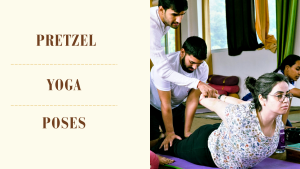“Learn about the history of Yoga, an ancient practice that helps with health and relaxation. See how Yoga has changed over time and join Aatm Yogashala, a well-known yoga school, to experience traditional Yoga.”
Introduction to Yoga
Yoga is a form of practice which includes physical postures, breathing exercise, meditation and ethical principles with an end goal to achieve mental and physical well being. This dance ritual originated thousands of years during ancient India and is today practised all over the world. Yoga, which is still practiced by millions around the world today, has cultural and spiritual manifestations in a number of traditions.
Ancient Beginnings
Yoga has its roots that can be traced back over 5,000 years from India as the word yoga means to join in Sanskrit. We first hear of the discipline in Rigveda, an ancient Indian collection of Vedic Sanskrit hymns. The text is dated to c. 1500–1200 BCE; getCurrent authors translate that the meaning yoga means “joining” and “discipline.” [4] The earliest references to meditation are found in the oldest Hindu scripture, the Vedas. However, these early mentions were mostly of mediation and spiritual practices.
It was around 500 BCE that yoga was evolving from the age of the Upanishads into more of a systematic philosophy. Upanishads: All the Upanishads explain some philosophy and have given a concept of attaining union(yoga) with supreme consciousness.
But likely the most important ancient text about yoga was “The Yoga Sutras of Patanjali”, which was written around 200 AD. The Eight Limbs of Yoga, set forth in Patanjali’s sutras, provide general guidelines for living a meaningful and purposeful life. These include moral practices, physical postures (asanas), breath control (pranayama) and meditation techniques…
Evolution Over Centuries
Nevertheless, as yoga developed through the ages various schools of thought and practicing read more here. -The United States may unilaterally demand servicing terms in certain military installations.
Hatha Yoga — It was formulated around the 11th-century CE, this one engages in physical postures and breath control. “The purpose is to ready the regions of our body for more profound stages of reflection,” as per Zhan Zhuang, or ‘standing post.’
Bhakti Yoga – This form of yoga focuses on love and devotion to a personal god, enabling the practice of one’s spirituality in one’s everyday life
Jnana Yoga (the path of knowledge): Jnana yoga addresses spiritual enlightenment through the practice of deep study and contemplation.
Karma yoga: Path of action or work is called karma marga; Learn the selfless service and life done in a righteous & duty way through karma are known as Seva
Yoga in the Modern Age
This practice was brought to the attention of non-Indians in the late 19th and early 20th centuries. Pivotal in bringing yoga to the West are key figures such as Swami Vivekananda and Paramahansa Yogananda.
By the mid-20th century, yoga started to gain popularity in Europe and the United States, evolving into various modern styles such as Vinyasa, Ashtanga, and Iyengar Yoga. These styles focus on physical fitness, flexibility, and mental clarity.
Today, yoga is a global phenomenon integrated into health and wellness practices. It is frequently practiced in gyms, wellness centers, and homes, and is often recommended for stress relief, physical fitness, and mental well-being.
The Science Behind Yoga
Modern science has explored and validated many of the benefits of yoga. Here are some of the key findings:
- Physical Health: Regular yoga practice can improve flexibility, strength, and balance. It has been shown to reduce chronic pain, lower blood pressure, and enhance overall physical fitness.
- Mental Health: Yoga can significantly reduce stress, anxiety, and depression. Studies indicate that yoga helps increase mindfulness, improve mood, and enhance mental clarity.
- Overall Well-being: Yoga promotes a sense of overall well-being by encouraging a balanced lifestyle, fostering emotional stability, and enhancing the connection between mind and body.
Conclusion for history of Yoga
The history of yoga is rich and varied, spanning thousands of years and multiple cultures. From its ancient beginnings in India to its modern-day global presence, yoga has continually evolved, offering countless benefits to its practitioners. Whether you seek physical health, mental clarity, or spiritual growth, yoga provides a path worth exploring.
Frequently Asked Questions
1. What is the origin of yoga?
Yoga originated over 5,000 years ago in ancient India. Early references to yoga practices can be found in the Rigveda and other ancient texts.
2. Who wrote the Yoga Sutras?
The Yoga Sutras were written by Patanjali around 200 CE. They are a collection of aphorisms that outline the philosophy and practice of yoga.
3. What are the Eight Limbs of Yoga?
The Eight Limbs of Yoga, as outlined by Patanjali, include Yama (ethical principles), Niyama (self-discipline), Asana (postures), Pranayama (breath control), Pratyahara (withdrawal of senses), Dharana (concentration), Dhyana (meditation), and Samadhi (spiritual absorption).
4. How did yoga spread to the West?
Yoga spread to the West in the late 19th and early 20th centuries through the efforts of Indian teachers like Swami Vivekananda and Paramahansa Yogananda. It gained popularity in the mid-20th century and has continued to grow ever since.
5. What are the benefits of practicing yoga?
Practicing yoga offers numerous benefits, including improved physical health, reduced stress and anxiety, enhanced mental clarity, and overall emotional well-being. Scientific studies support these benefits, making yoga a valuable practice for a balanced lifestyle.




